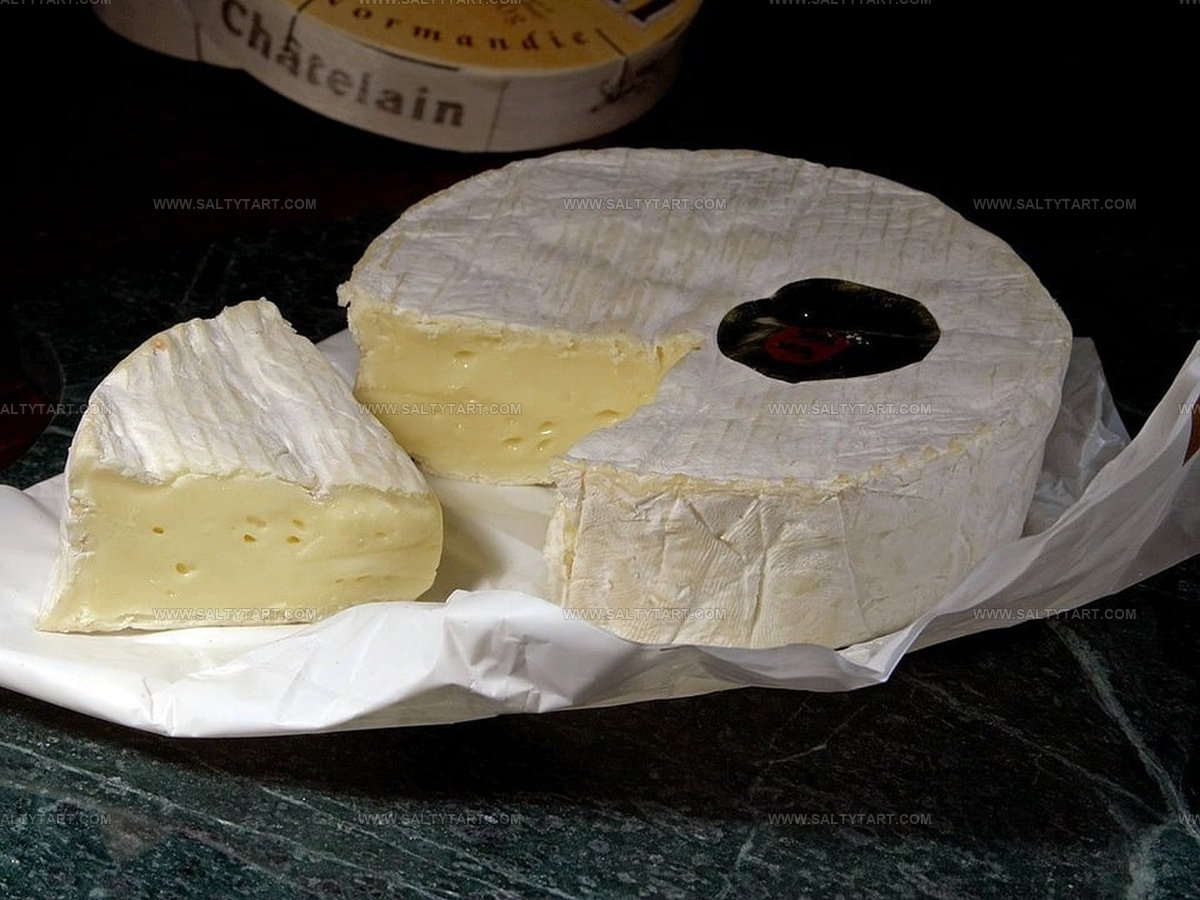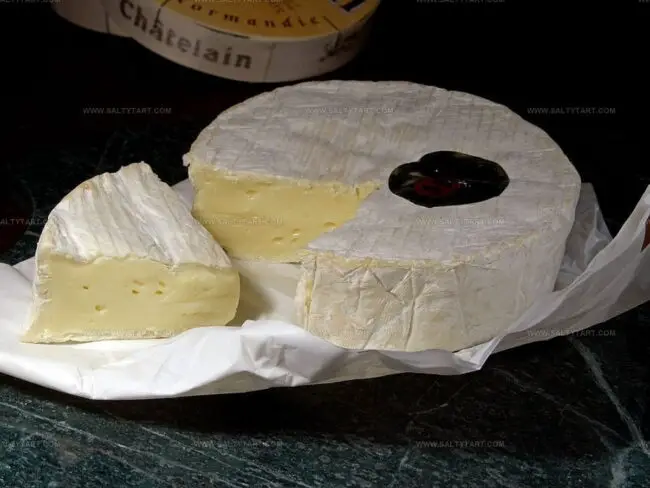Fontina Cheese Taste: The Nutty, Buttery Delight Explained
Fontina cheese, a beloved Italian dairy treasure, sparks curiosity among food enthusiasts seeking unique flavor profiles.
Originating from the misty valleys of the Aosta region, this exceptional cheese carries a rich culinary heritage that beckons taste buds.
Smooth and complex, its reputation precedes it among cheese connoisseurs and casual consumers alike.
Mysterious yet inviting, fontina presents a sensory experience that goes beyond simple taste descriptions.
Cheese lovers often wonder about its distinctive characteristics and what makes it stand out from other varieties.
Regional traditions and careful aging processes contribute to its remarkable complexity, hinting at untold gustatory adventures.
Let this journey into fontina's world unravel its delectable secrets and transform your understanding of exceptional cheese.
Fontina Cheese: Basic Info
Fontina sits as a soft milk cheese with a smooth feel and light yellow shade.
Makers crafted this cheese during medieval times in Italy's mountain region called Aosta Valley.
Special details mark this cheese from other cheese types.
Makers use raw milk from special cows living in mountain valleys.
These unique cows belong to a specific local breed native to that region.
Cheese makers spread Fontina production across world markets over decades.
Versions now exist in multiple countries beyond Italian borders.
Regional versions appear in Sweden, Denmark, United States, Argentina, France, and Quebec regions.
European Union officials recognized original Fontina cheese with special protected status called Designation of Origin (DOP).
Milk from mountain cows creates this famous cheese with smooth qualities.
Fontina carries mild and rich flavors with soft buttery hints and subtle nutty notes.
Chefs love this cheese in European kitchens across UK, Denmark, and Italy.
Restaurants use Fontina in many dishes like pasta and soups.
Small tastings help people understand its delicate flavor profile.
Fontina Cheese: Taste Explained
Fontina cheese boasts a unique texture and flavor profile.
Its consistency shifts from medium-soft to complex, with a taste that ranges from mild to medium sharp.
Chefs can unlock nutty, creamy, and tangy notes by adding Fontina to different meals.
Fontina cheese produced outside Italy carries a different character.
Versions from US, Denmark, and Sweden show softer textures, milder flavors, and more visible holes compared to traditional Italian styles.
Fontal and Fontinella resemble Aosta Fontina in flavor and look, but they are not the original cheese.
Cheese makers outside Italy use pasteurized milk, which impacts the overall flavor experience.
Fontina carries a gentle, subtle taste with subtle nutty undertones.
Italian Fontina works wonderfully to complement other ingredients.
Many cheese lovers enjoy Fontina solo, though it shines brightest when blended with additional cheeses.
Sandwiches, omelets, wraps, and numerous dishes welcome Fontina's smooth qualities.
Its low melting point makes it perfect for topping various recipes.
Flavor differences exist between Italian and international versions, with non-Italian options typically presenting more mellow characteristics.
While Fontina stands as a kitchen staple in Italy, its popularity has spread worldwide.
Regional Varieties of Fontina & Their Flavors
Fontina cheese comes in several regional varieties, each with its own unique flavor, texture, and traditional uses that reflect the area where it’s made:
Fontina Val d’Aosta (Italy)
This classic Italian fontina is made in the Alps. It’s known for its strong, nutty, and earthy taste with hints of mushrooms and grass. The texture is creamy and melts beautifully, making it perfect for fondue or polenta.
Swedish Fontina
Lighter and milder than the Italian version, Swedish fontina is pale yellow, semi-soft, and has a gentle, buttery flavor with just a touch of nuttiness. It’s often used for snacking, sandwiches, or melting in casseroles.
Danish Fontina
Danish fontina is smooth and slightly elastic, with a mild and creamy taste. It’s less pungent than traditional Italian fontina and often has a waxed rind to keep it fresh. This style is great for slicing, melting, or adding to cheese boards.
American Fontina
Made in the U.S., this fontina tends to be very mild, creamy, and easy to melt, with a subtle flavor that’s ideal for grilled cheese, pasta, or everyday cooking.
Fontina Cheese Nutrition
Fontina cheese packs a powerful nutritional punch with its impressive profile:
Mineral contents include calcium, salt, phosphorus, vitamin K, vitamin A, and vitamin B12.
Research suggests Fontina cheese supports multiple health aspects.
Heart health improves through its nutrient balance.
Digestive systems benefit from its unique composition.
Bone strength receives natural support from key ingredients.
Metabolic functions also see positive impacts when consuming this cheese.
Kidney health might receive protective effects from regular moderate consumption.
Is Fontina Like Mozzarella?
Mozzarella might not seem like an obvious choice when searching for fontina alternatives, but these cheeses share more similarities than you might expect.
Both cheeses originate from Italy and follow similar production methods.
Fontina comes from cow's milk, while mozzarella comes from buffalo milk, which is closely related to cows.
Their cheese-making process involves a stretch drying technique that creates similar texture and consistency.
Key differences appear in taste profiles.
Fontina starts with a nutty and savory flavor that hints at sweetness.
Mozzarella's finish differs slightly, with a less complex ending compared to traditional fontina.
Chefs might find mozzarella works well in tomato-based dishes, though the taste nuance won't be exactly the same.
Mozzarella serves as a workable substitute when fontina isn't available, especially in recipes that don't rely heavily on the cheese's specific flavor characteristics.
Eating Fontina Cheese: How-To
Fontina cheese melts like a dream and shines in warm dishes.
Baked Fontina combines olive oil, herbs, and cheese into a delectable bread dip.
Sauces, sandwiches, pizzas, and pasta dishes all welcome this tasty cheese.
Chefs love Fontina in many recipes, especially soups and baked meals.
Cooks can grate it over pasta and pizza for extra flavor.
Fontina's taste stands out as rich and smooth.
Each cup contains 510 calories, though some might prefer lower-calorie options.
Weight-conscious eaters can find alternative cheese options that match Fontina's profile.
Fontina's smooth texture closely resembles Vacherin, another soft cow's milk cheese.
Vacherin cannot completely replace Fontina in all recipes.
Such cheese works best in melted dishes like casseroles and tastes great when served at room temperature.
Mozzarella shares many similar characteristics with this delightful cheese.




Mike Reynolds
Founder & Recipe Developer
Expertise
Farm-to-table cuisine, Seasonal recipe development, Sustainable cooking techniques, Food photography
Education
Asheville-Buncombe Technical Community College (A-B Tech)
Associate Degree in Culinary Arts
Mike studied culinary arts with a strong focus on farm-to-table principles and sustainable cooking. His training emphasized the importance of fresh, local ingredients and environmentally responsible practices in the kitchen.
Mike’s food journey began deep in the Blue Ridge Mountains, where weekends at farmers’ markets and home-cooked meals sparked a lifelong obsession with simple, seasonal eating.
After earning his Associate Degree in Culinary Arts from Asheville-Buncombe Technical Community College, he set out to bring farm-to-table cooking into everyday kitchens, without the fuss.
Mike’s philosophy is all about keeping it fresh, unfussy, and full of heart. When he’s not crafting new single-serving recipes, he’s hiking mountain trails, chatting with local farmers, or experimenting with wild ingredients in his backyard kitchen.